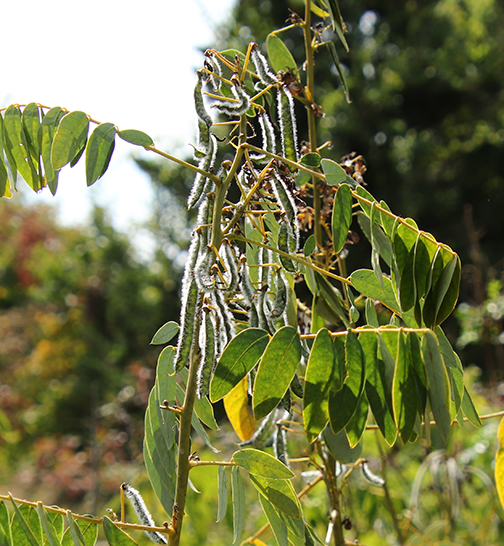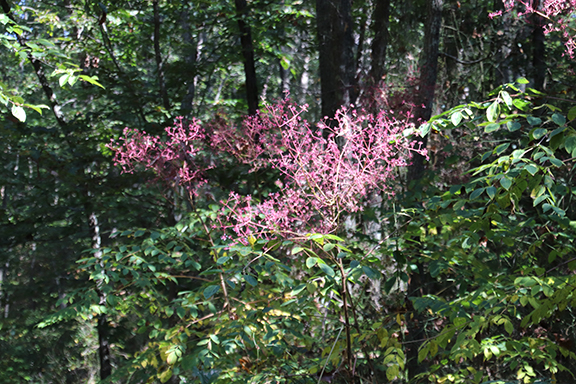Happy Mystery Monday! Can you guess what is pictured in photo below?

The answer to last week’s mystery is wild senna, Senna marilandica, pictured in photo below:

Wild senna is a native perennial, and a legume. As with many other legumes, senna plants initially send their energy into their root system, therefore the top of the plant will be slow to develop.
This plant is found most often on riverbanks, in moist meadows, pastures, and roadsides, in open to partially-sunny areas of woodlands and sheltered areas. Established senna plants are drought tolerant.
Senna blooms with a profusion of buttery yellow flower clusters atop lush green foliage in mid-Summer. Senna will grow fuller and more numerous flowers in full-sun than senna grown in the shade. The flower provides nutrient rich pollen that feeds growing larvae and provides provision for the long winters.
Wild senna does not produce nectar in their flowers, instead, the nectar is found in little bulbous growths at the base of each stem called extrafloral nectaries. These nectar-producing glands are physically apart from the flower at the base of the leaf petioles, near the flower buds.
Wild senna is a larval host plant of silver-spotted skipper and several sulphurs, including sleepy orange.
Senna seeds develop in pea-like pods. The pods are covered with tiny hairs, trichomes, that protect the seeds from insects and other herbivores. The seed pods eventually turn black and remain on senna’s erect stems for months.
Mystery Monday is sponsored by the Spy Newspapers and Adkins Arboretum.



Fred Newbury says
I found this growing in someone’s yard and was given some seed pods. I think they are beautiful and I’m going to try and grow them next year.